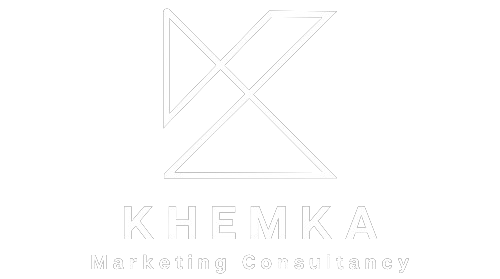Increase Your Cold Email Conversion Rate: Key Strategies
Cold email conversion rates are crucial for the success of your outreach campaigns. I will explore key strategies and techniques to improve your cold email conversion rate in this article. We will discuss ideal open rates, reply rates, positive reply rates, meeting booking rates, and unsubscribe rates. By implementing these strategies, you can maximize the effectiveness of your cold emails and drive greater business success.

Key Takeaways:
- Improving cold email conversion rates is essential for successful outreach campaigns.
- Key factors to consider are ideal open rates, reply rates, positive reply rates, meeting booking rates, and unsubscribe rates.
- Implementing effective strategies for increasing cold email conversion rate can maximize the effectiveness of your cold emails.
What is the Average Open Rate for Cold Emails?
The average open rate for cold emails is around 24%. Achieving a high open rate is crucial for the success of your email outreach campaigns. It’s important to consider timing and engagement strategies to improve your open rates.
Timing plays a significant role in getting your cold emails noticed. Sending your emails when your prospects are most likely to check their inbox can increase your chances of being opened. Additionally, adding an engaging pre-header text can further boost open rates by 10%. This text appears as a preview in the recipient’s inbox and can entice them to open the email.
By optimizing your timing and crafting compelling pre-header texts, you can improve your open rates and increase the visibility of your cold emails.
“Timing plays a crucial role in achieving a high open rate, so it’s important to send your cold emails when your prospects are likely to check their inbox.”
Optimizing Open Rates:
- Send emails when recipients are most likely to check their inbox
- Add an engaging pre-header text to entice recipients
- Use A/B testing to experiment with different subject lines and optimize open rates
By implementing these strategies, you can improve your open rates and increase the chances of your cold emails being read. Remember that open rates are just one aspect of cold email performance. Check out tips and tricks related to cold emailing here. The next section will explore the average response rates for cold emails and strategies to boost them.
What is the Average Response Rate for Cold Emails?
When it comes to cold email campaigns, one of the key metrics to consider is the response rate. The average response rate for cold emails is only 8.5%. This means that for every 100 cold emails sent, you can expect only about 8 or 9 responses. However, there are strategies you can employ to boost this rate and increase your chances of getting a response from your recipients.
Adjusting the frequency of your email campaigns can significantly impact your response rates. Research has shown that sending one email weekly over four weeks can increase response rates by 20%. This approach allows you to stay on your recipients’ radar without overwhelming them with too many emails at once. Additionally, sending follow-up emails is another effective technique to improve response rates. Studies have shown that sending at least three follow-up emails can increase response rates by 28%. By strategically timing your follow-ups and experimenting with different approaches, you can increase the likelihood of getting a response from your cold email recipients.
It’s important to note that the content and messaging of your emails also play a crucial role in driving higher response rates. Personalization is key in capturing your recipients’ attention and increasing the chances of a response. Take the time to research your prospects and tailor your emails to their specific needs and pain points. By addressing their individual concerns and demonstrating value, you can pique their interest and encourage them to respond. It’s also important to make your call-to-action clear and compelling so your recipients know exactly what you’re asking of them.
Example of a cold email:
“Hi [Recipient’s Name],
I hope this email finds you well. I recently came across [Company Name] and was impressed by your innovative approach to [specific industry or challenge].
I wanted to reach out and introduce myself. My name is [Your Name], and I specialize in [your expertise or area of focus]. I have successfully helped companies similar to yours [specific result or achievement].
I would love to learn more about [recipient’s company or specific pain point] and see if there is an opportunity for me to assist you. Can we schedule a quick call this week to discuss further?
Looking forward to connecting with you.
Best regards,
[Your Name]”
By implementing these strategies and crafting personalized and compelling emails, you can increase your cold email response rates and improve the overall effectiveness of your outreach campaigns.

What is the Average Unsubscribe Rate For Cold Email Campaigns?
The average unsubscribe rate for cold email campaigns is an important metric to monitor and manage. A high unsubscribe rate can indicate a need for improvement in your email content or targeting, while a low unsubscribe rate can be a positive sign that your recipients find value in your emails. On average, the unsubscribe rate for cold email campaigns is 0.17%. However, it’s important to note that this rate can vary depending on factors such as industry, email frequency, and the quality of your email list.
To reduce unsubscribe rates in your cold email campaigns, there are a few strategies you can implement. First, ensure you deliver valuable and relevant content to your recipients. Personalize your emails and tailor them to the interests and needs of your audience. This can help establish a connection and make your recipients more likely to stay engaged.
Regularly reviewing and cleaning your email list is also crucial in minimizing unsubscribe rates. Remove inactive or unengaged subscribers to maintain a healthy email subscriber base. By keeping your list up-to-date and focusing on delivering value, you can reduce unsubscribe rates and improve the overall effectiveness of your cold email campaigns.
Key Strategies to Reduce Unsubscribe Rates in Cold Email Campaigns:
- Deliver valuable and relevant content
- Personalize your emails
- Regularly review and clean your email list
“By implementing these strategies, you can minimize unsubscribe rates and maintain a healthy email subscriber base.”
Which Is the Best Day to Send Emails for a Higher Cold Email Conversion Rate?
Choosing the right day to send cold emails is crucial in maximizing open rates and increasing the chances of getting a response. While there is no one-size-fits-all answer, research consistently shows that Tuesdays are generally the best day to send cold emails.
Tuesdays have been found to have higher open rates and response rates compared to other weekdays. This is likely because people have settled into their workweek routine and are more likely to check and engage with their emails. By targeting your audience on Tuesdays, you can increase the visibility of your cold emails and improve both open and response rates.
However, it’s important to note that the optimal day for sending cold emails may vary depending on your specific audience and industry. Different professionals may have different email habits and preferences. Therefore, analyzing your audience’s behavior and engagement patterns is advisable to determine the best day to send your cold emails.
“Tuesdays have consistently shown higher open rates and response rates in cold email campaigns.”
By studying your audience’s behavior, segmenting your email lists, and experimenting with different days, you can identify the optimal day for your cold email outreach. This data-driven approach can help you increase open rates, improve response rates, and ultimately achieve better results from your cold email campaigns.
Do Subject Lines Affect Email Open Rates?
Subject lines play a crucial role in determining the open rates of cold emails. A well-crafted subject line has the power to capture the recipient’s attention and entice them to open the email. Research has shown that personalized subject lines can increase open rates by up to 26%. Personalization can include using the recipient’s name or mentioning their interests or previous interactions. For example, including phrases like “I saw your recent article on [topic]” or “Re: our conversation at [event]” can grab their attention and make them more likely to open the email.
Additionally, it’s important to create subject lines that accurately reflect the contents of the email. Misleading or clickbait subject lines may initially attract clicks, but they can also lead to high unsubscribe rates and damage your reputation. To improve open rates, focus on writing clear, concise, and compelling subject lines that accurately convey the value and relevance of the email content.
“Personalized subject lines can increase open rates by up to 26%.”
Experimenting with different subject line strategies can also help optimize open rates. A/B testing subject lines by sending two different versions to a small subset of recipients can provide valuable insights into what resonates best with your audience. By analyzing the results and iteratively improving your subject lines, you can continuously increase open rates and improve the effectiveness of your cold email campaigns.

A/B Testing: Optimizing Subject Lines for Higher Open Rates in Cold Emails
A/B testing can be an effective strategy for boosting open rates in cold email campaigns. By sending two different versions of your email to a small subset of recipients and comparing their performance, you can identify the most effective elements for improving open rates.
One area where A/B testing can have a significant impact is in optimizing subject lines. The subject line is the first impression your email makes, and a captivating subject line can entice recipients to open and read your email.
With A/B testing, you can experiment with different subject lines and analyze which ones generate higher open rates. You can test variations in length, personalization, tone, and keywords to determine what resonates best with your target audience.
“A/B testing subject lines can increase open rates by 49%.”
By incorporating A/B testing into your cold email strategy, you can continuously refine and improve your open rates. Remember, subject lines are just one aspect of your cold email campaign, but they play a critical role in capturing your recipient’s attention. Test, analyze, and iterate to find the subject lines that drive higher open rates and maximize the impact of your cold emails.
What’s a Good Reply Rate for Your Campaigns?
You’re probably wondering what a good reply rate for your campaigns is. After all, the goal of any campaign is to increase the conversion rate, right?
Here are a few things to keep in mind when thinking about reply rate:
1. The average reply rate for cold emails is somewhere between 5% – 8%.
2. Optimize your cold emails for a better conversion rate by using a strong subject line, a clear call-to-action, and providing value.
3. One way to improve cold email conversion rate is to segment your list so that you’re only sending emails to those who are most likely to convert.
4. Another strategy for increasing the cold email conversion rate is to use a multi-step approach, where you follow up with those who don’t reply to your initial email.
5. Finally, don’t get discouraged if your reply rate isn’t as high as you’d like. Just keep testing and tweaking your campaigns, and you’ll eventually see the results you’re looking for.
How Many Meetings Can Be Booked for Every 1000 Emails Sent?
In the ever-evolving landscape of cold email marketing, a question that often crosses my mind is: For every 1000 emails I send out, how many meetings can I realistically book? This is particularly pertinent when considering reply rates in the 5% to 8% range. Let’s delve into this, shall we?
Unraveling Reply Rates
When I dispatch 1000 emails, garnering a reply rate of 5% to 8% means I’m drawing back 50 to 80 responses. It’s an encouraging first indicator of the interest my outreach is generating. However, the journey from reply to a booked meeting is where the real challenge lies.
Converting Replies into Meetings
Not every reply translates into a meeting. It’s a nuanced progression, hinging on the relevance and persuasiveness of my initial email, coupled with the effectiveness of my subsequent follow-up. The art here is in transforming a positive reply into a confirmed meeting.
Estimating the Meeting Booking Rate
Let’s crunch some numbers for a clearer picture. Assuming a conversion rate of 10% from replies to booked meetings, a 5% reply rate (50 replies) would result in about 5 meetings. Similarly, at an 8% reply rate (80 replies), I could be looking at around 8 meetings. Keep in mind that these are estimates and can vary widely based on several factors.
Influencing the Conversion Journey
The conversion rate from a reply to a booked meeting is influenced by a multitude of factors. The personalization of the email, its value proposition, and the clarity of the call-to-action are pivotal. Additionally, the industry, the specific audience targeted, and even the timing of the email can play a significant role.
Key Takeaways (To Improve Cold Email Conversion Rate)
In my experience, booking meetings from email campaigns is a strategic endeavor. It’s not just about playing the numbers game; it’s about crafting messages that resonate, fostering initial responses, and skillfully converting them into scheduled meetings. Understanding and optimizing these facets can significantly enhance my meeting booking potential from every batch of 1000 emails sent thus becoming one of the effective ways to improve cold email conversion rate.
Does Cold Email Generate Good ROI?
Cold email campaigns have the potential to generate a significant return on investment (ROI) when executed effectively. In fact, studies have shown that cold email can generate an ROI of up to 4400% more than any other marketing channel. By adopting strategies that focus on personalization and relevance, you can maximize the impact of your cold email campaigns and achieve greater success.

Personalization is key when it comes to improving the ROI of your cold email campaigns. By tailoring your messages to the interests and needs of your recipients, you can increase engagement and drive better results. Segmenting your email list allows you to target specific groups with relevant content, further enhancing the effectiveness of your campaigns.
Another important factor in maximizing ROI is to deliver value to your recipients. Ensure that your email content is informative and addresses pain points or challenges your recipients may be facing. By providing value, you increase the chances of your cold emails being read, considered, and acted upon.
Key Points:
- Cold email campaigns can generate a strong ROI when executed effectively.
- Personalization and relevance are crucial for enhancing the impact of your cold email campaigns.
- Segmenting your email list and delivering value to your recipients are key strategies for maximizing ROI.
Remember, the success of your cold email campaigns depends on the combination of various factors, such as open rates, response rates, and ultimately, conversion rates. By implementing strategies that focus on personalization, relevance, and value, you can increase the effectiveness of your cold email campaigns and achieve a good ROI.
Conclusion
Improving your cold email conversion rate requires a strategic approach and a focus on optimizing key metrics. By implementing strategies for increasing cold email conversion rates, you can enhance the performance of your cold email campaigns and achieve better results.
When it comes to open rates, timing is crucial. Sending your cold emails at the right moment increases the chances of them being read. Additionally, crafting personalized subject lines and engaging pre-header text can capture the recipient’s attention, boost open rates and improve cold email conversion rates.
Response rates can be improved by adjusting the frequency of your email campaigns and strategically sending follow-ups. By finding the sweet spot between being persistent and not overwhelming your recipients, you can increase the likelihood of getting a positive response.
While some unsubscribes are inevitable, you can minimize them by delivering valuable and relevant content to your recipients. Regularly reviewing your email lists and ensuring proper targeting can help improve cold email conversion rates.
Overall, by implementing these cold email conversion rate strategies and continuously refining your approach, you can optimize the performance of your cold email campaigns and drive greater business success. Remember to monitor your results, analyze data, and adapt your strategies to meet the specific needs of your target audience. Good luck!
You can schedule a call with us if you want us to take care of your cold email outreach efforts.
Recent Posts
-
 Get 60% More Valid Emails With Waterfall Lead Enrichment
Get 60% More Valid Emails With Waterfall Lead Enrichment -
 Boost Your Sales with AI Cold Outreach Now
Boost Your Sales with AI Cold Outreach Now -
 Crack LinkedIn Lead Generation in Easy Steps
Crack LinkedIn Lead Generation in Easy Steps -
 Creating a Winning Cold Email Marketing Strategy: Complete Guide
Creating a Winning Cold Email Marketing Strategy: Complete Guide -
 Why We Chose to Become the Best Cold Email Agency in the Business
Why We Chose to Become the Best Cold Email Agency in the Business -
 Unlock Success: Learn to Write a Cold Email Effectively
Unlock Success: Learn to Write a Cold Email Effectively -
 Boost Your Sales with Outbound Lead Generation Strategies
Boost Your Sales with Outbound Lead Generation Strategies -
 Top-Notch Cold Email Templates for Successful Outreach
Top-Notch Cold Email Templates for Successful Outreach -
 Increase Your Cold Email Conversion Rate: Key Strategies
Increase Your Cold Email Conversion Rate: Key Strategies -
 Master Cold Email for B2B SaaS Success
Master Cold Email for B2B SaaS Success -
 Learn the Art of Cold Email: Tips, Tricks, and Best Practices
Learn the Art of Cold Email: Tips, Tricks, and Best Practices









